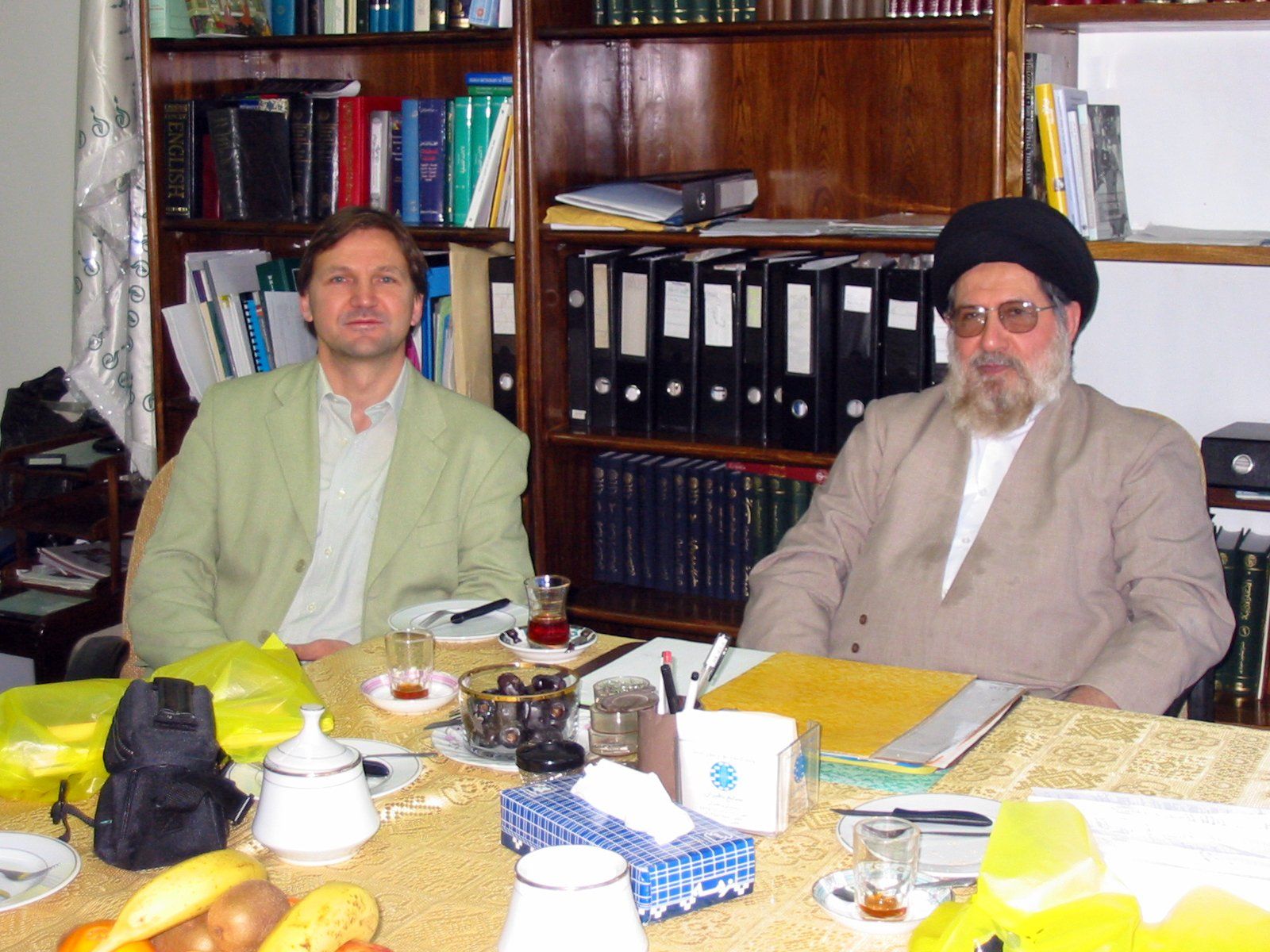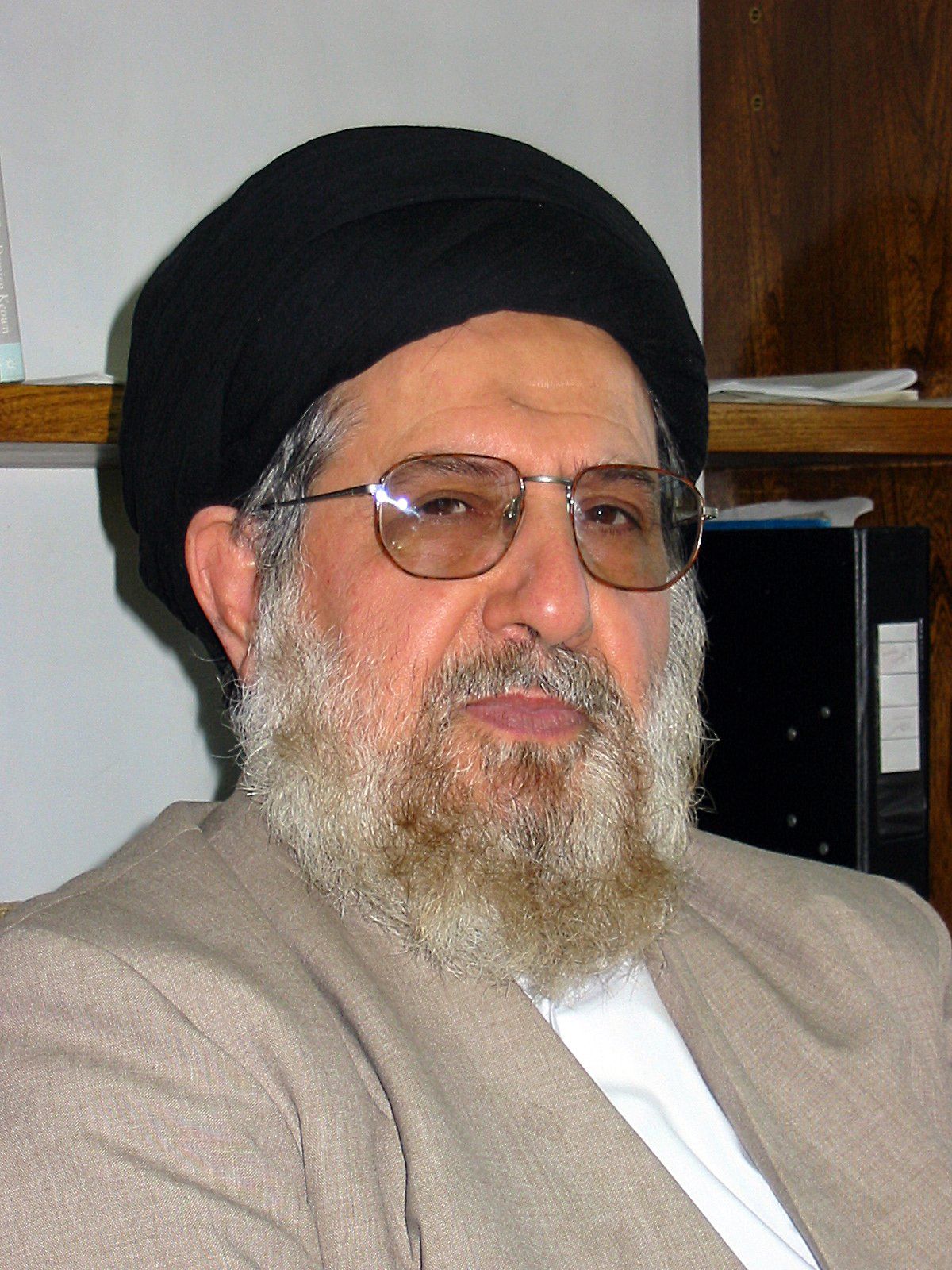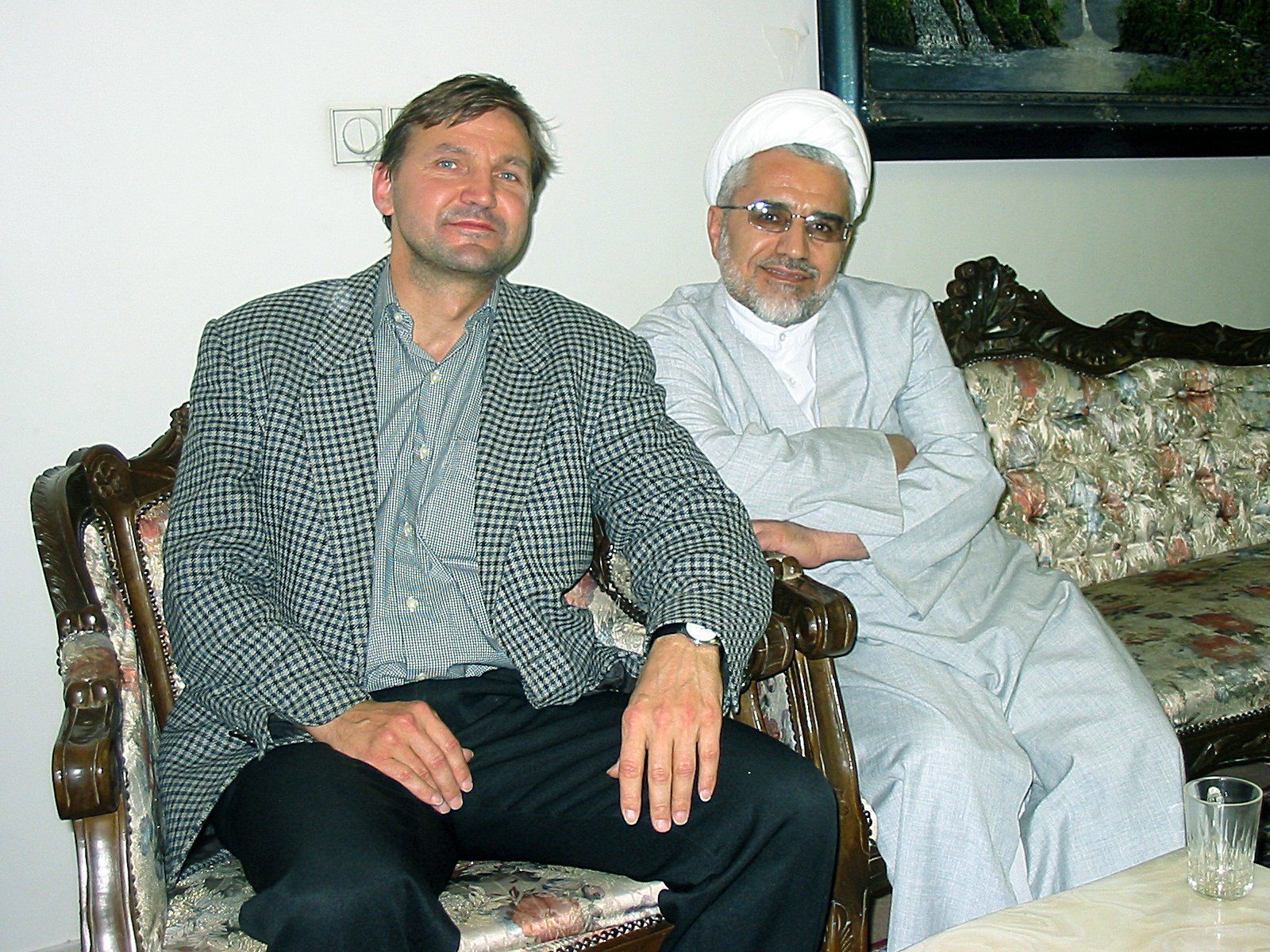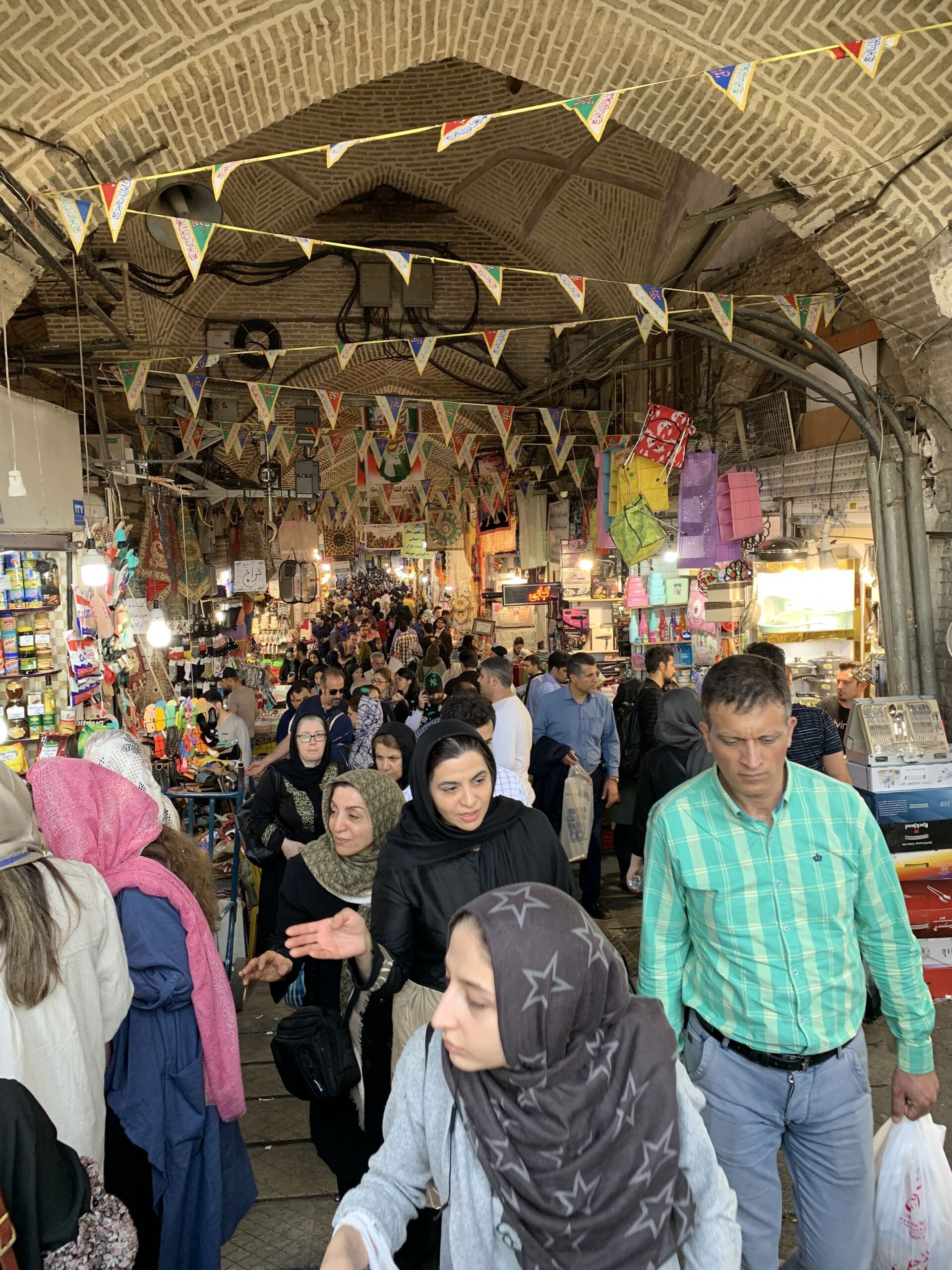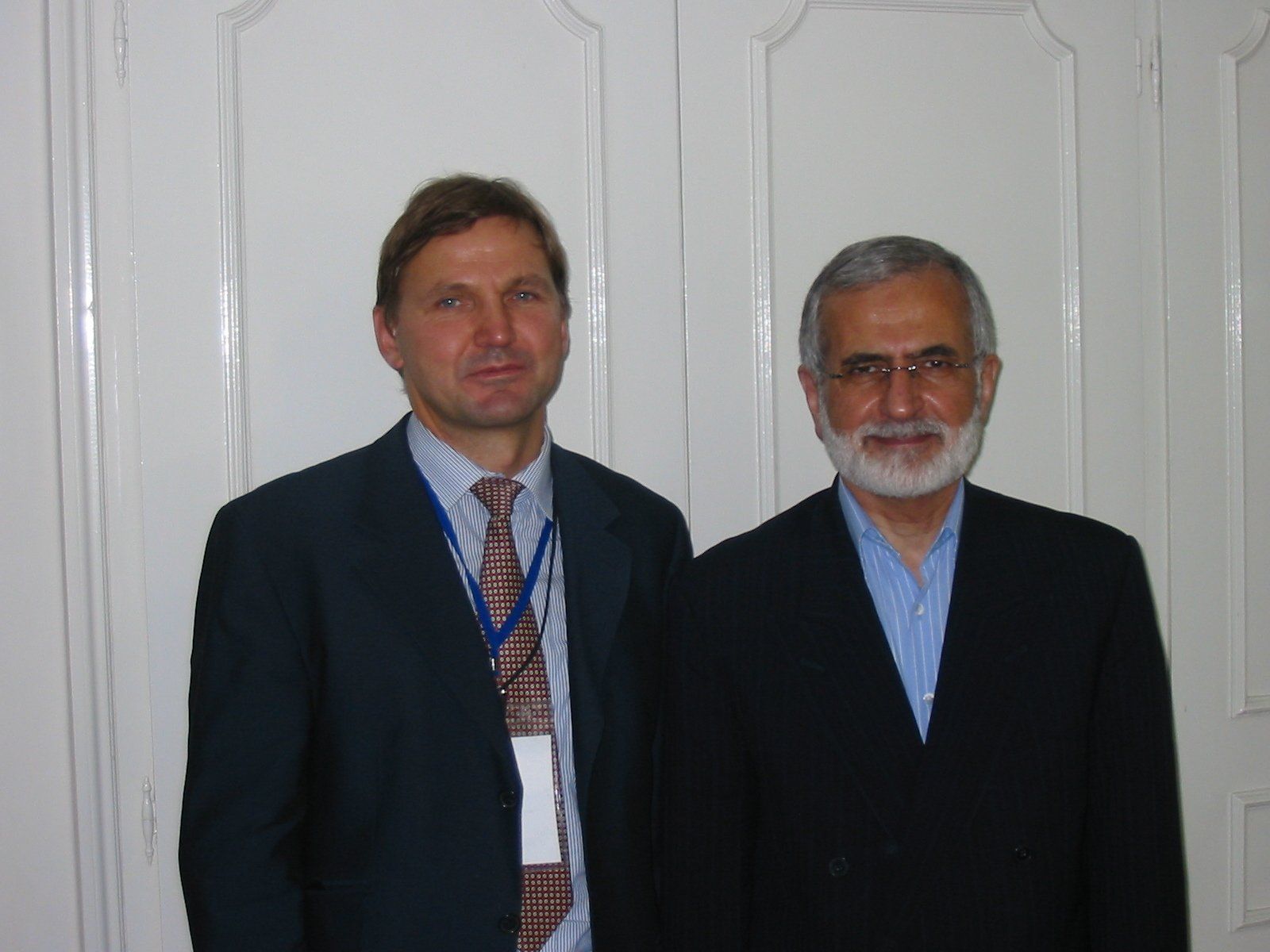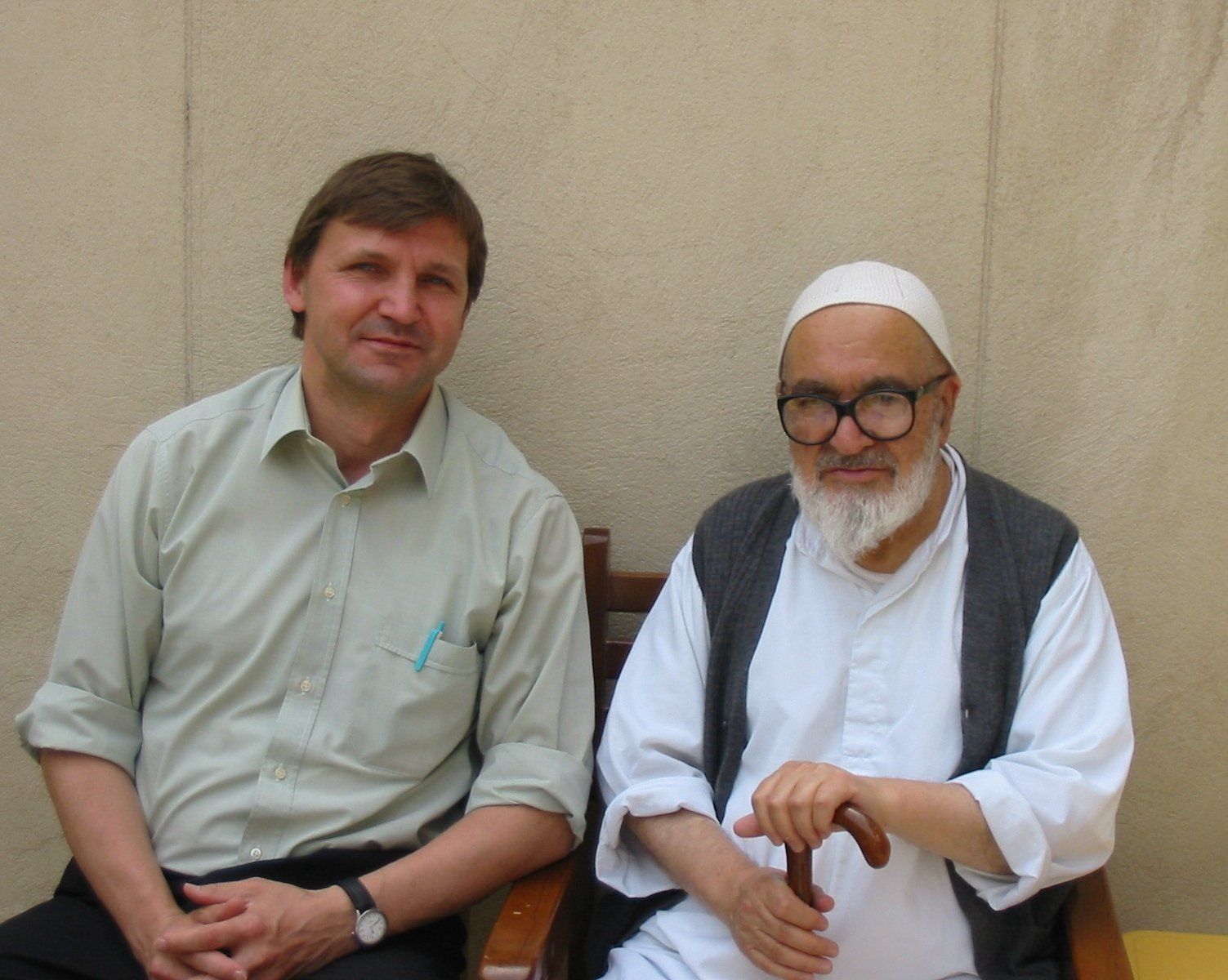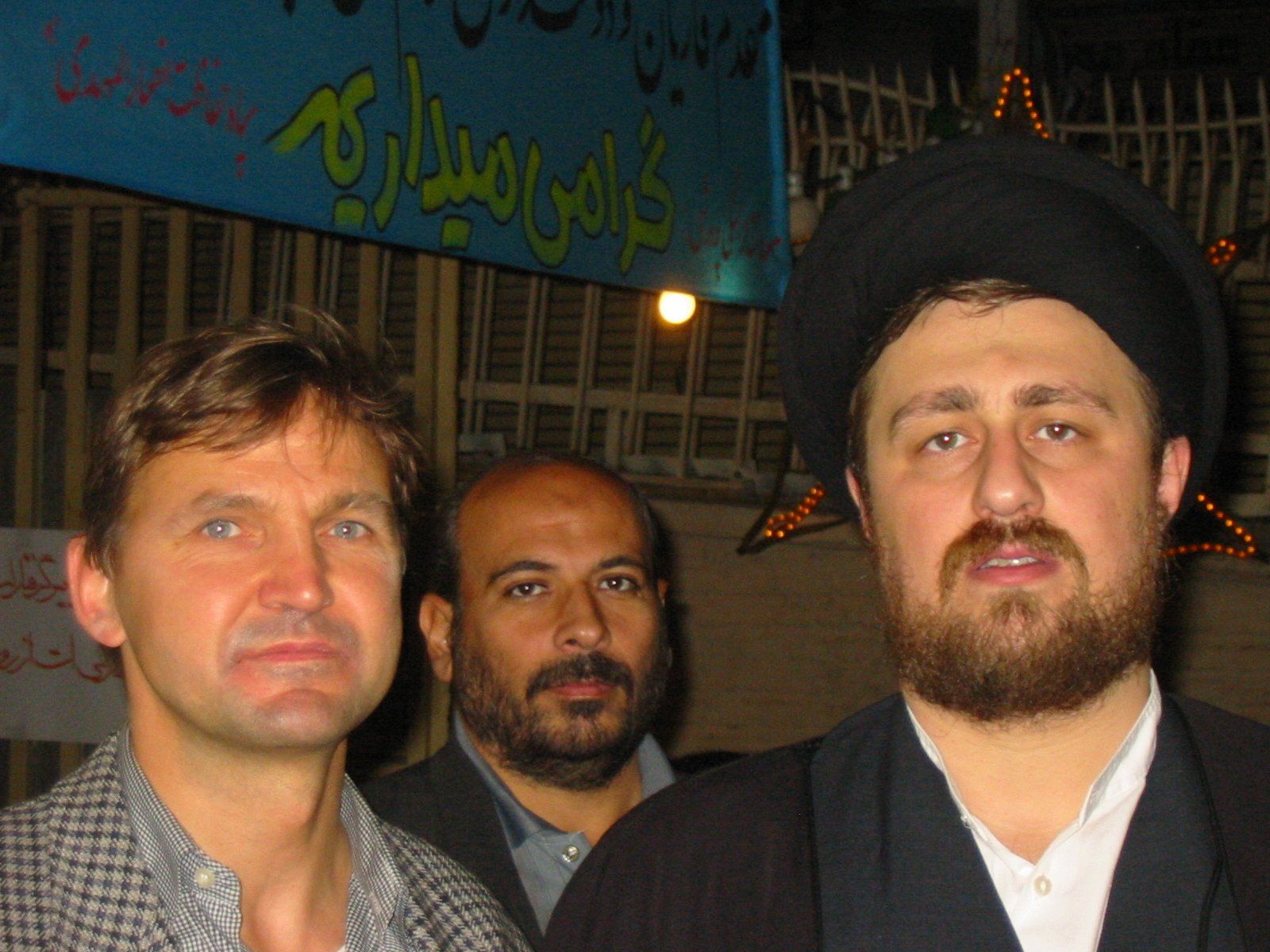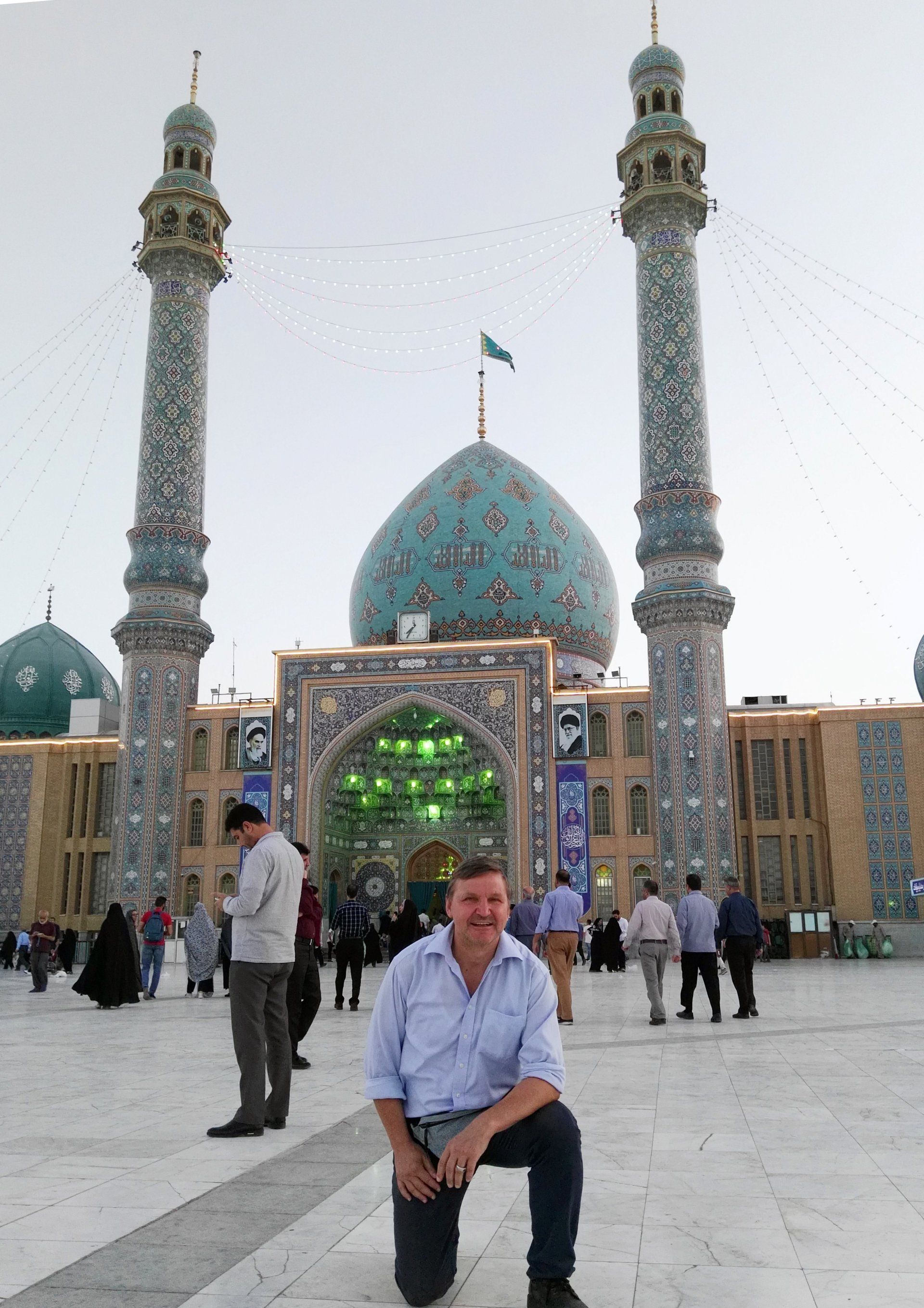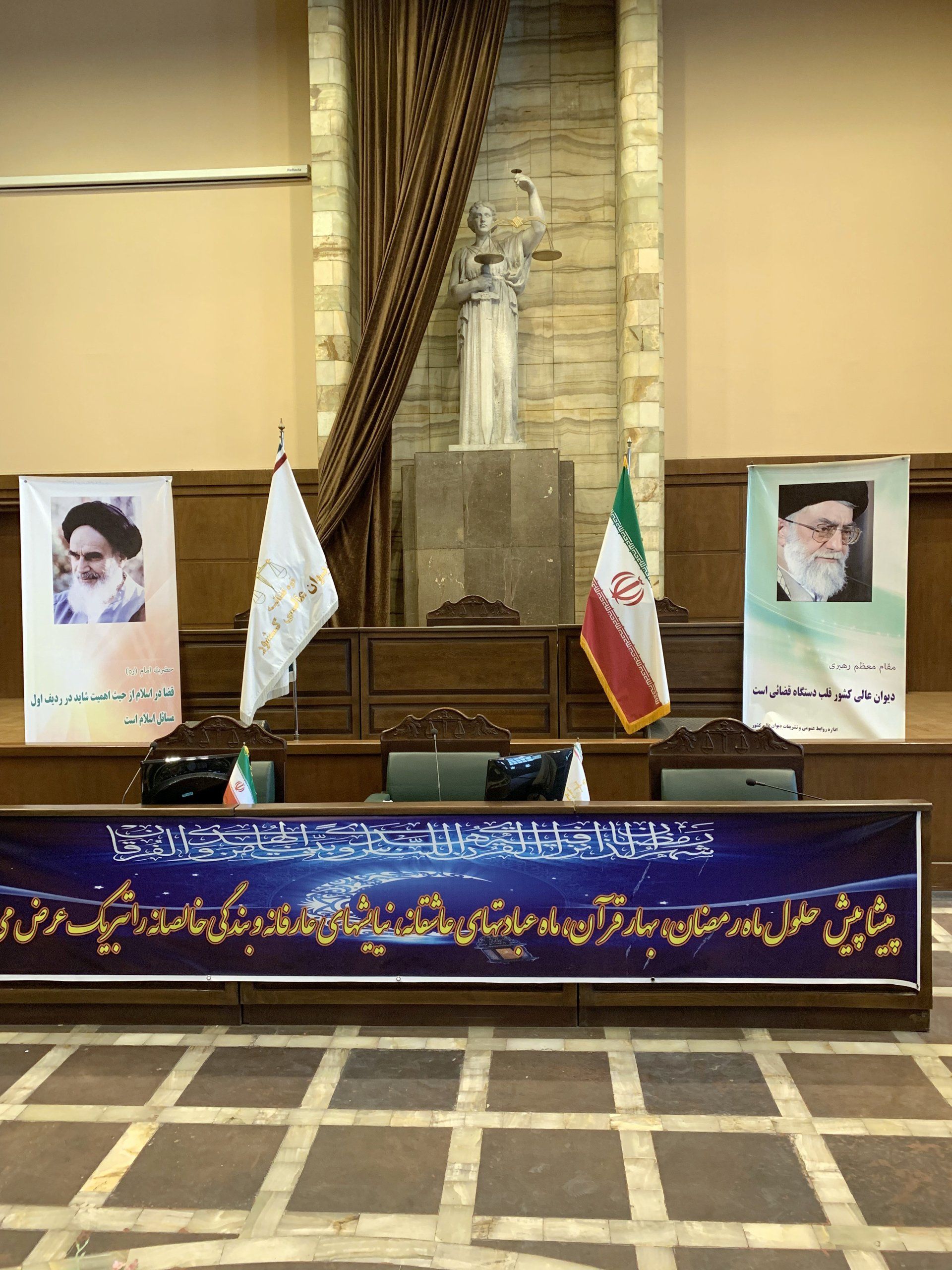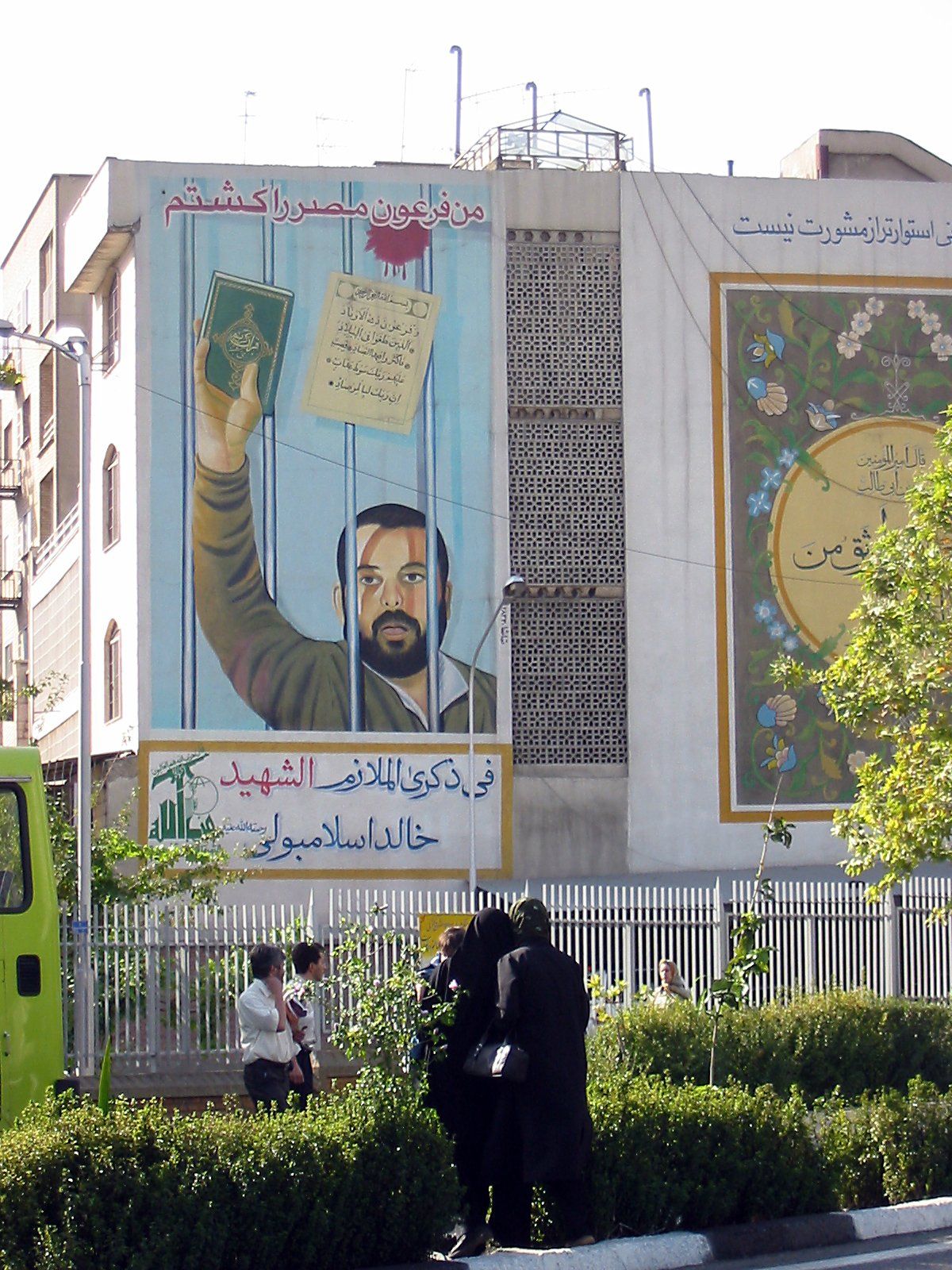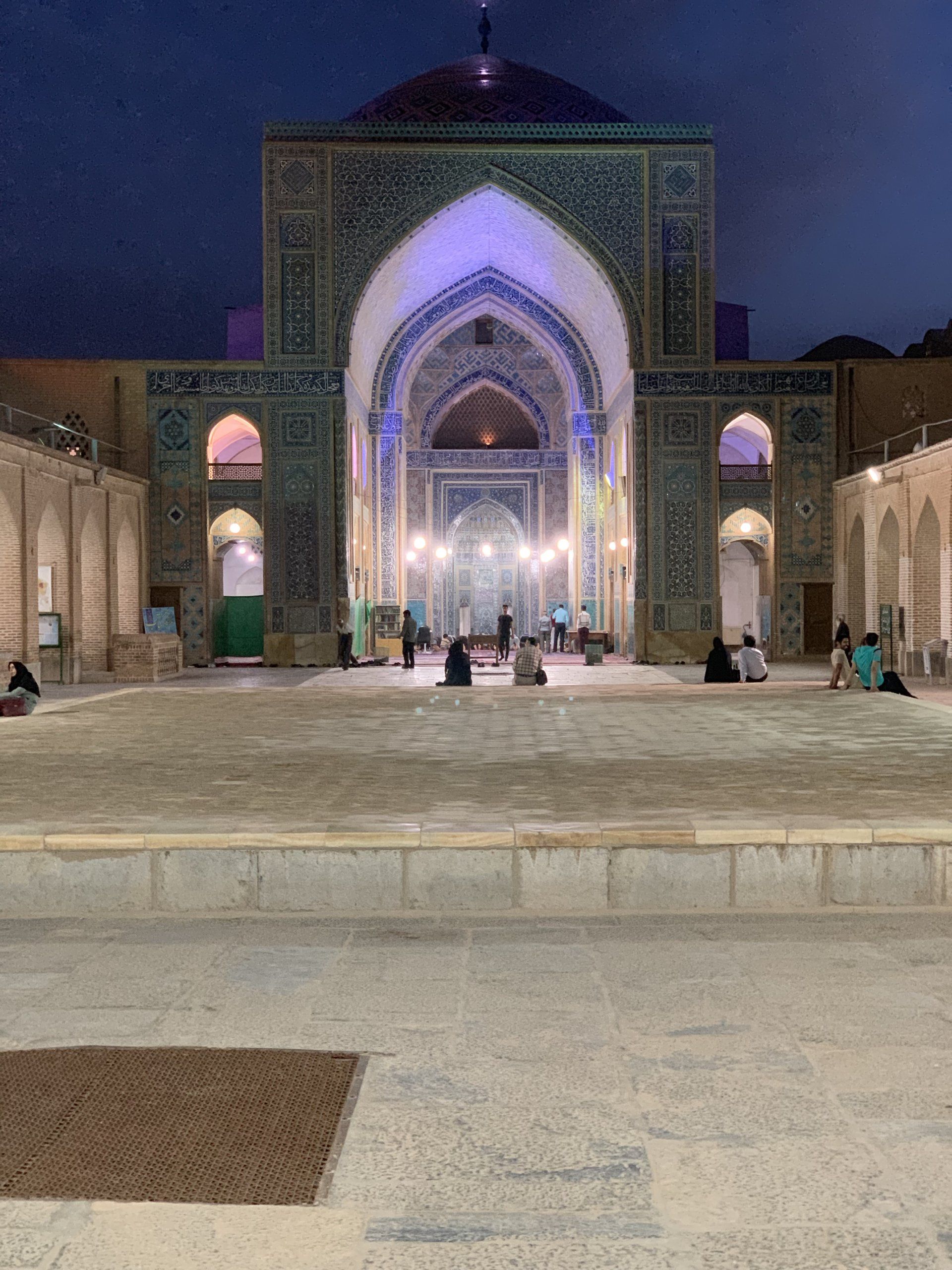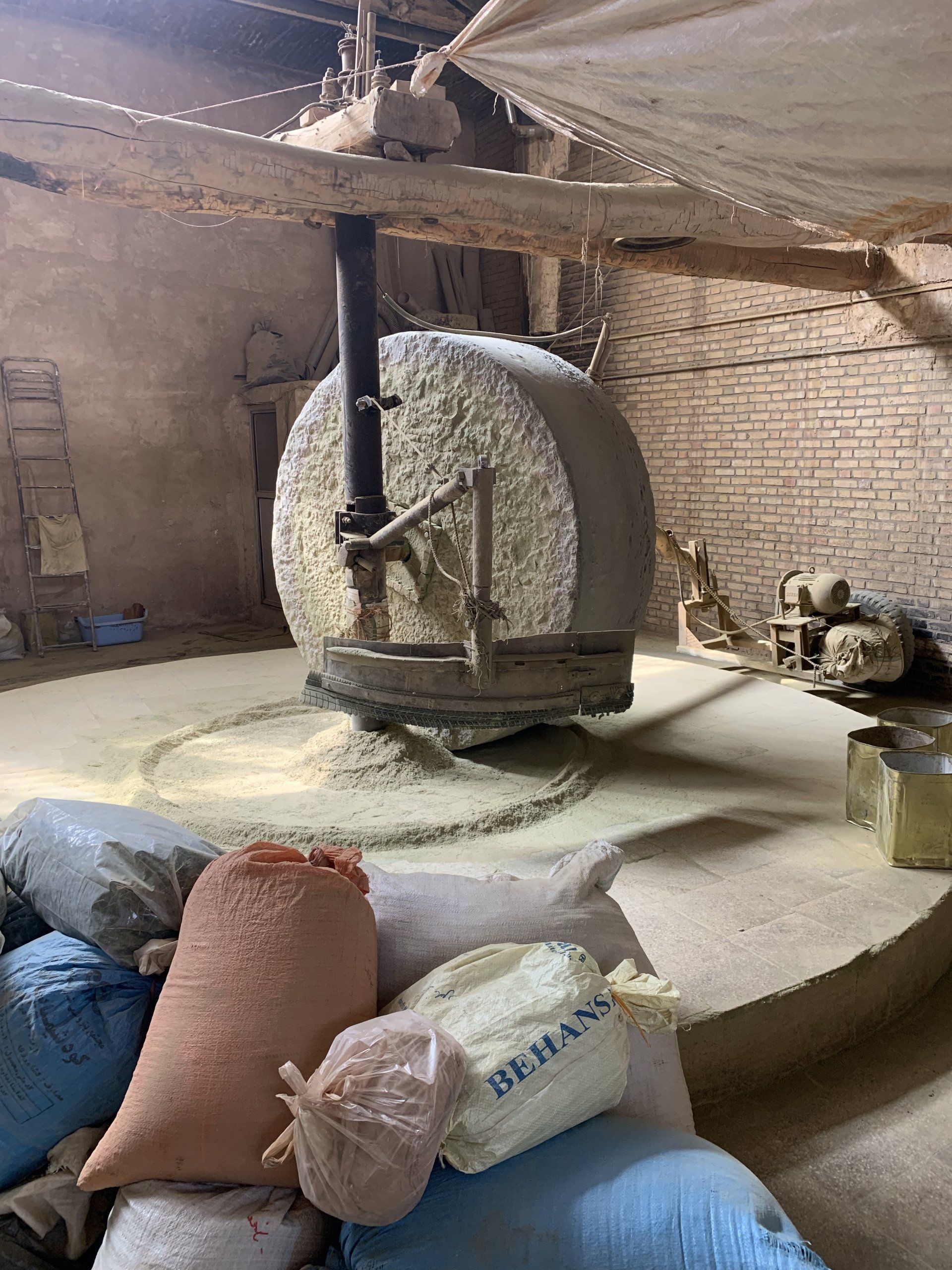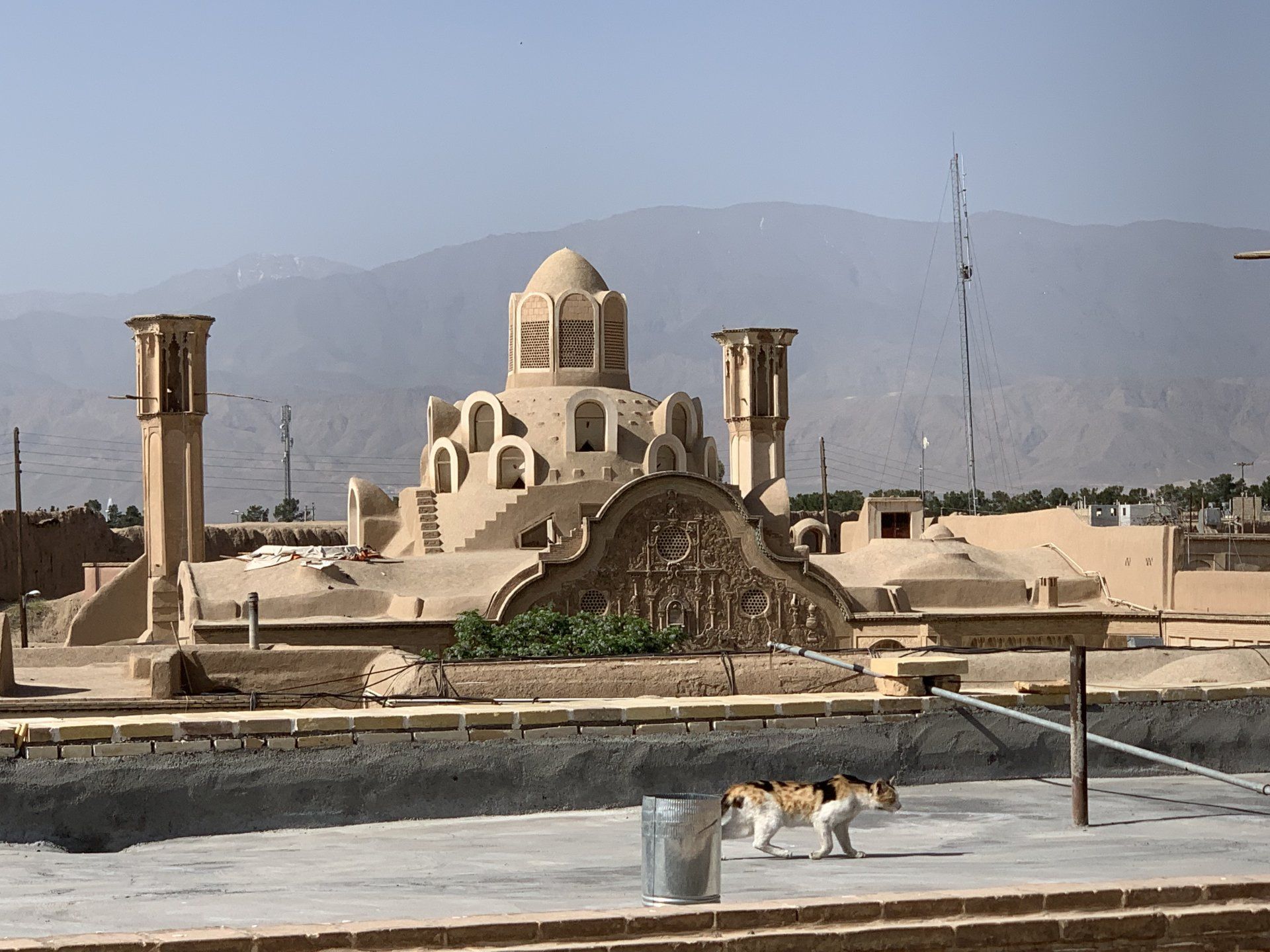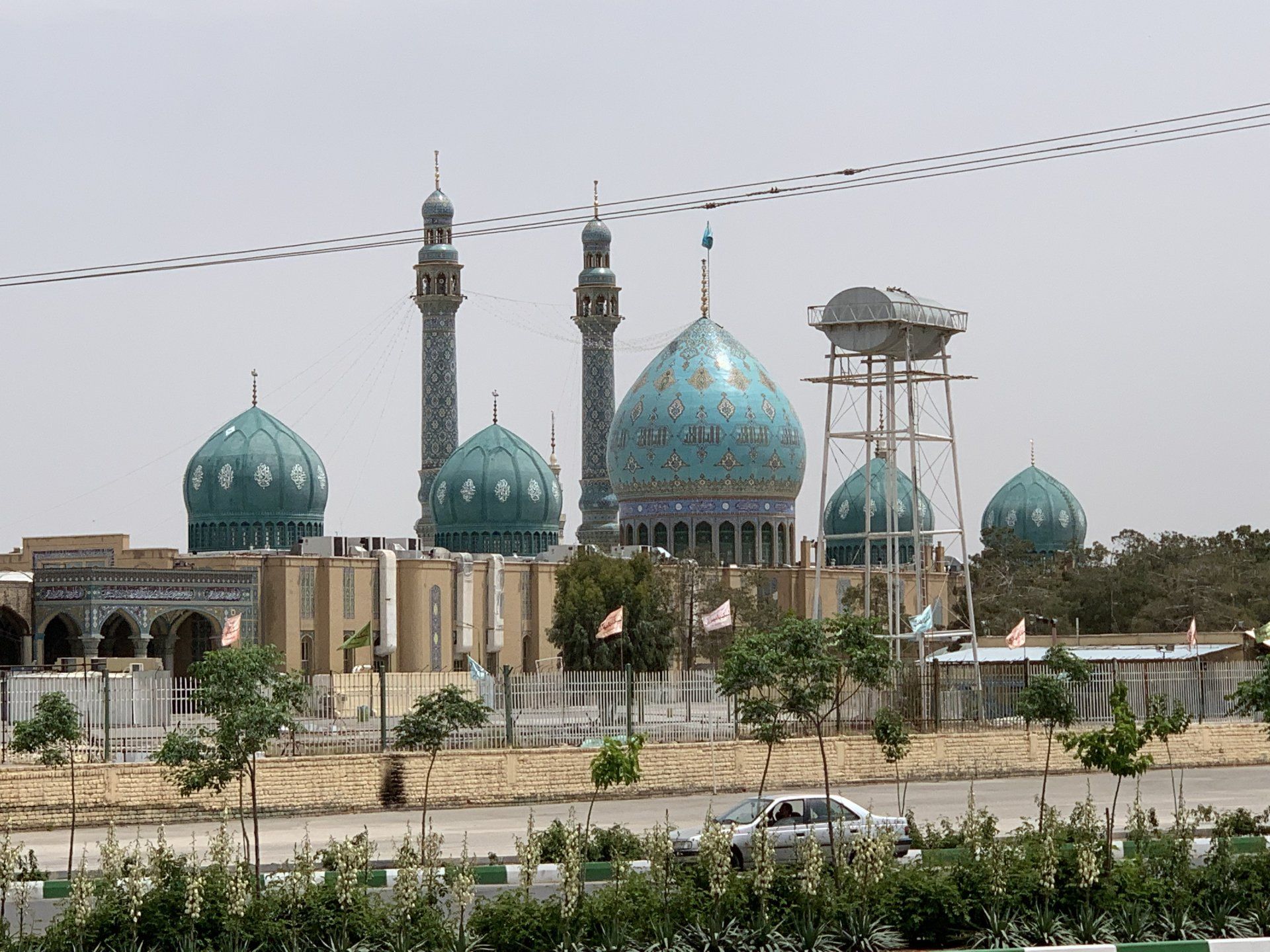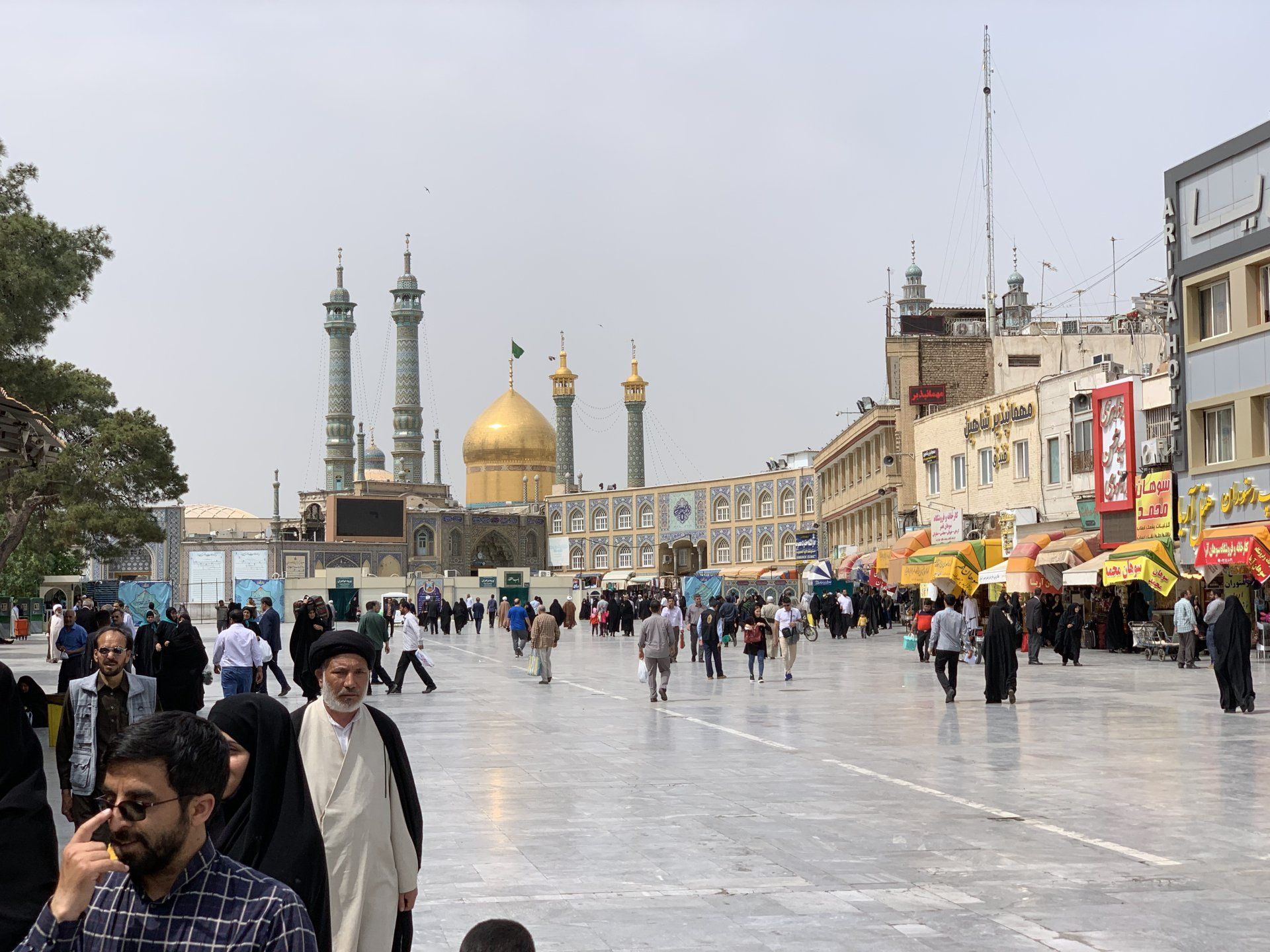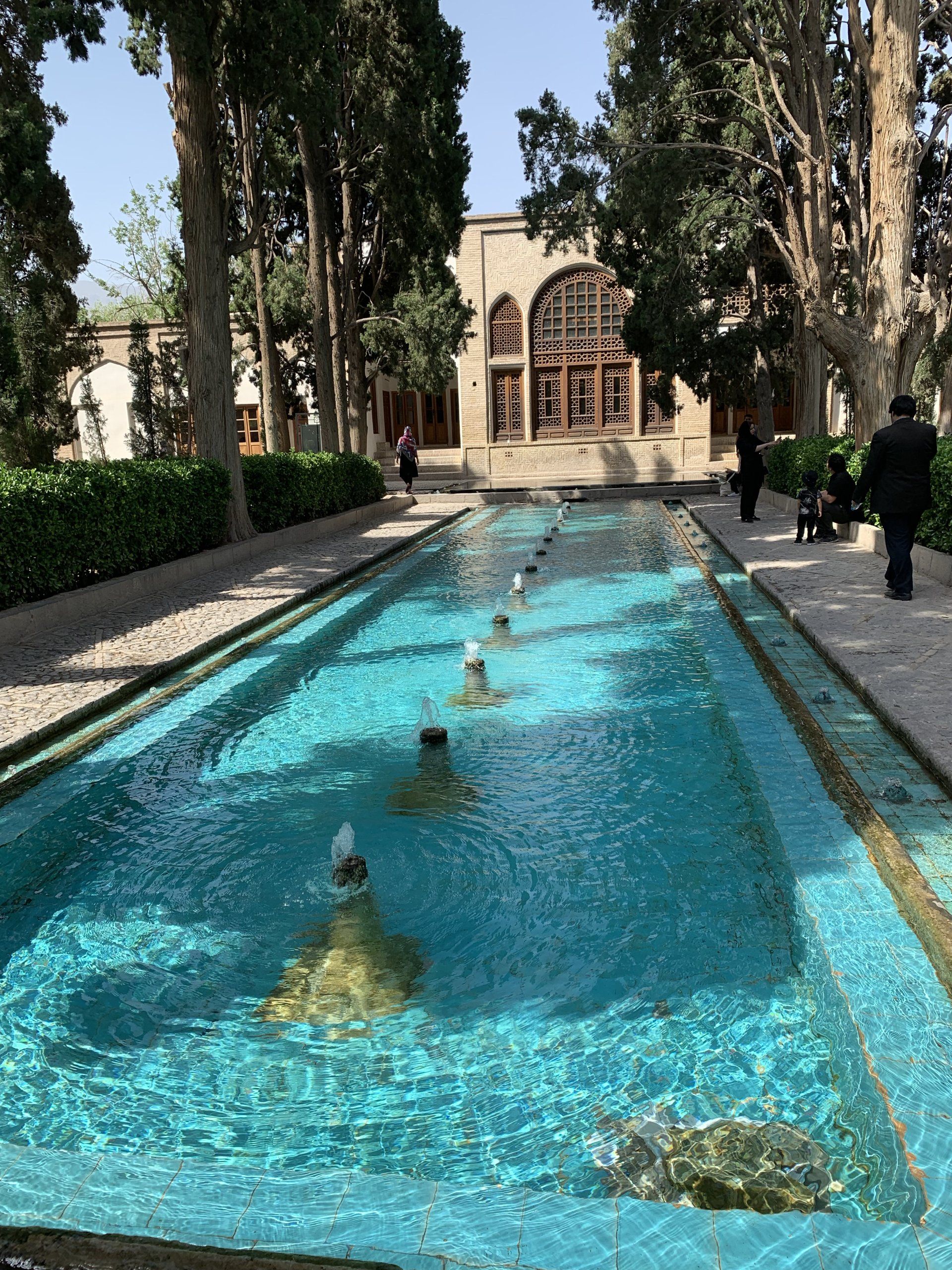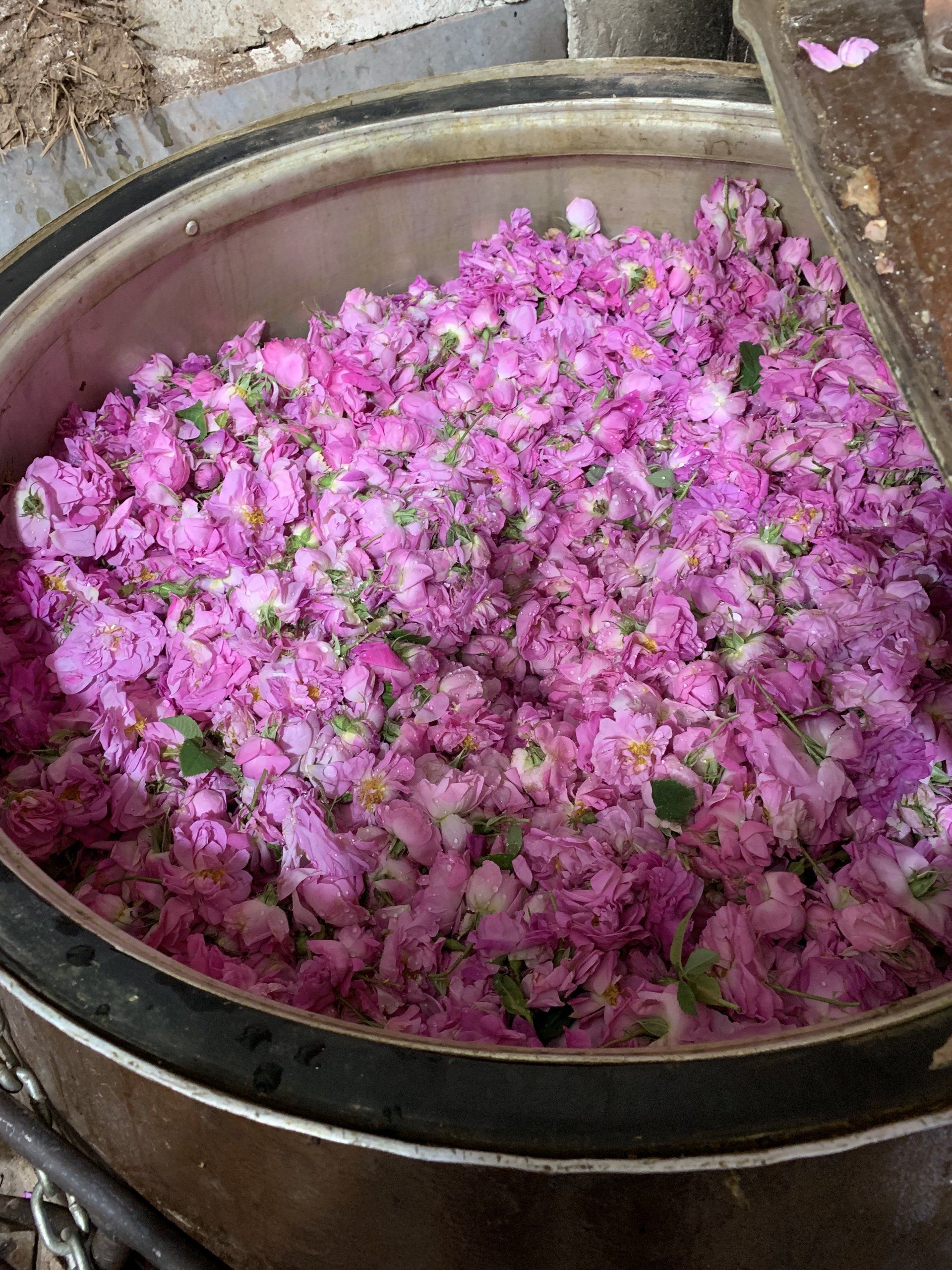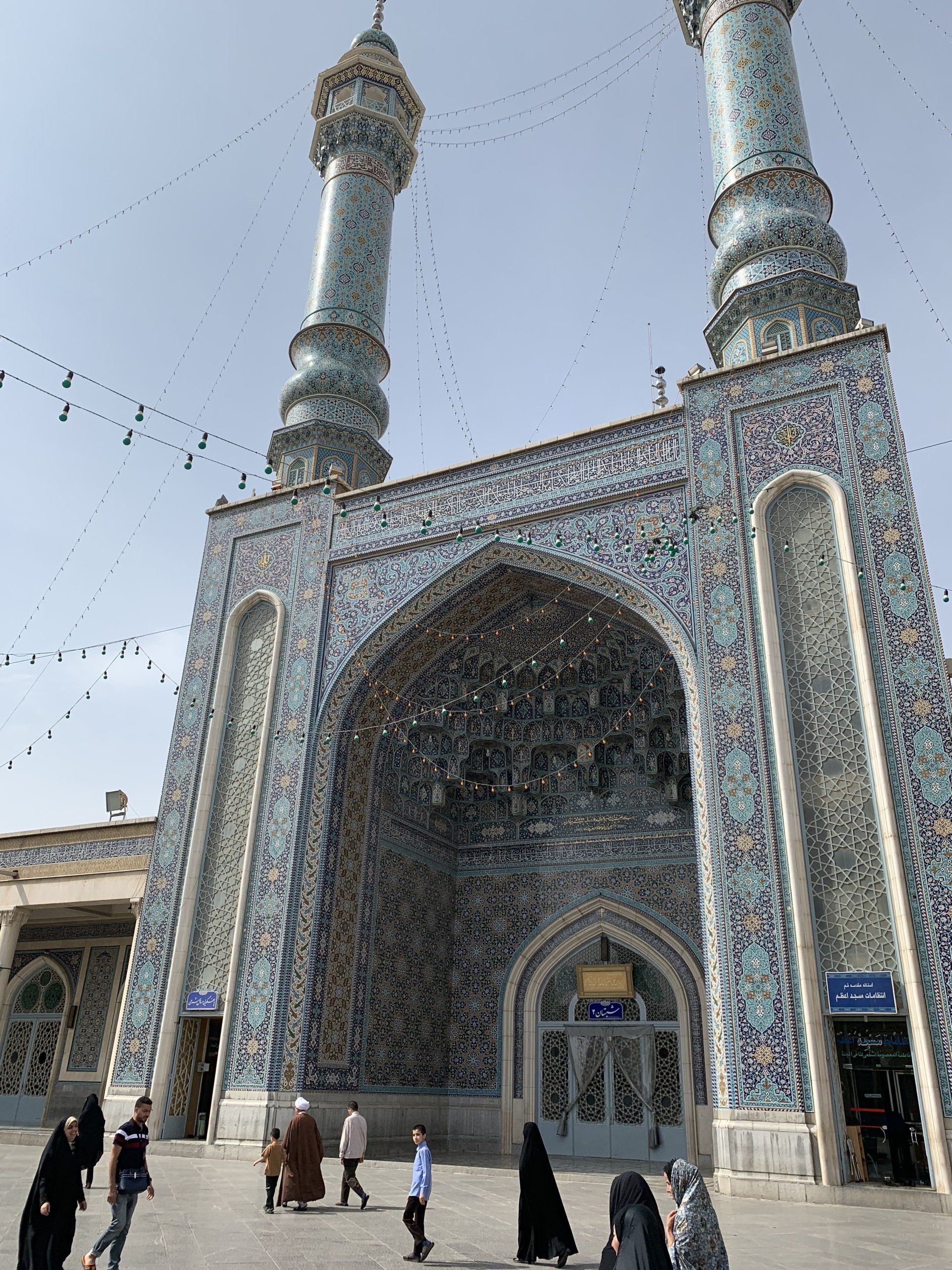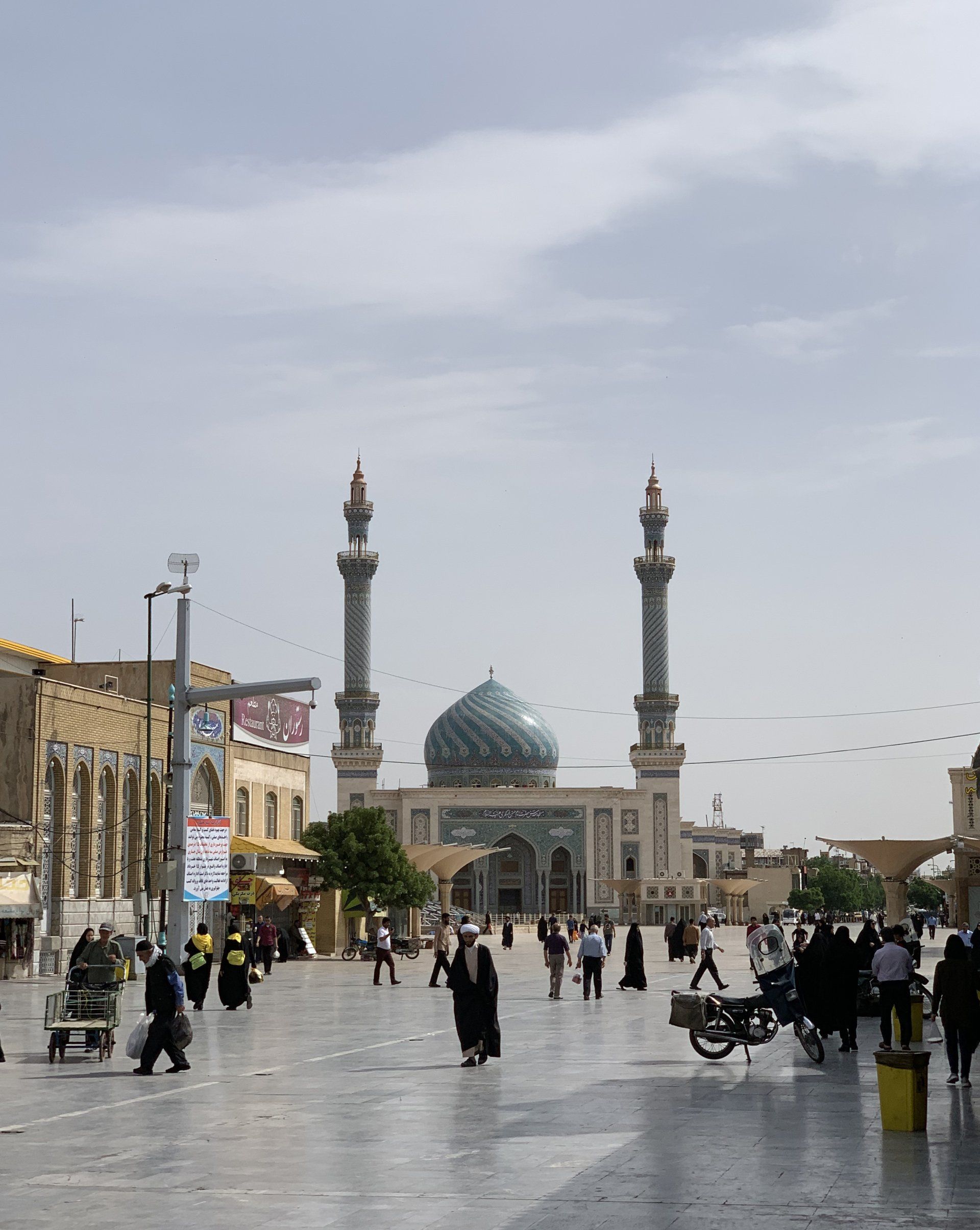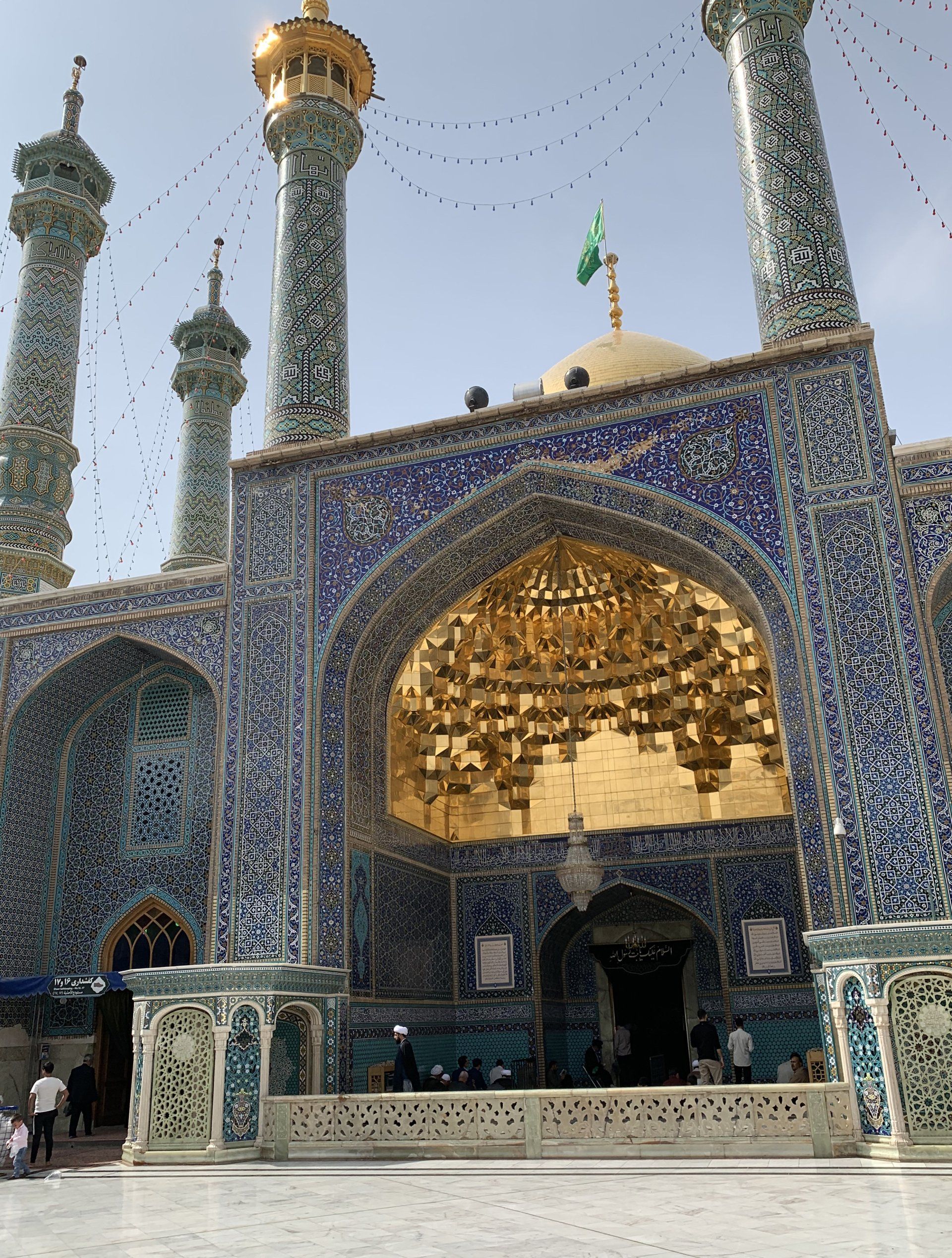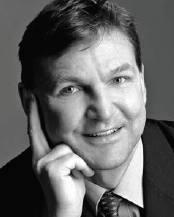Impressions from Iran
Please click for an explanation of the individual images!
Having Tea with the Brother of the Supreme Leader of Iran
Tehran, April 2005
Wilfried Buchta visits with the „Proximity Organisation“ (Pers.: majma`-e taqribe bein-ol-madhaheb-e eslami) in the rich northern part of Tehran. It is an oecumenic organization with the goal to further the rapprochement of the diverging confessions of Sunnis and Shiites and bring them closer together. The organization’s leader at the time, the Shiite cleric Mohammad Khamenei, the older brother of the Iranian Supreme Leader, Ali Khamenei, invited him to have tea with him so that they could exchange ideas.
A Man, Distrust Written all Over his Face
Tehran/Iran, April 2005
The fact that a high-ranking member of the power elite‘s conservative wing, who is the Supreme Leader’s brother at the same time, meets with a western scholar for a conversation, was highly unusual. But espionage paranoia is so widespread in Iran, that the distrust towards all western representatives is clearly and inextinguishably written in Mohammad Khamenei’s face
The High Price of Reforms
Tehran, November 2004
Wilfried Buchta was invited for dinner to the Shiite cleric Abdollah Nouri’s private residence in the district of Nivavaran in the north of Tehran. After their meal they both discussed the future of the reform movement in Iran under President Khatami. Nouri, who had been Interior Minister twice (1989-1993 and 1997-1999), had passionately fought for the reforms and paid a high price for it. The conservative leaning Judiciary had charged him, impeached him and sentenced him to a two-year jail sentence (2000-2002).
The magical beauty of color and calligraphy.
August 2018, Shiraz
Colorful light reflections on decorative tiles adorned with religious calligraphy art. Play of colors in the prayer hall of the Nasir-ol-Molk Mosque in the old town of Shiraz. Photo credit: Kerstin Wonisch
"Down with Israel!" The persistence of Iran's s 1979 revolutionary ideology in daily life.
April 2019, Main Bazar in Tehran.
Propaganda banner directed at Israel hanging over one of the shopping streets in the bazaar of Tehran. The regime never misses an opportunity to steer people towards an anti-American and anti-Israeli course.
Tehran
April 2019
People streaming in and out at one of the entrances to the Grand Bazaar (bazaar-e bozorg) in the city center of Tehran. The bazaar, one of the largest in the Middle East, is home to 30,000 shops, employs more than 100,000 people and continues to be one of the main centers of Iran's traditional economic structure. The majority of the bazaaris are still supporters of the religious regime. They are also the ones who keep open the numerous mosques and sacred sites that are hidden within the winding alleys of the bazaar structure.
Meeting a Foreign-Policy Advisor of the Supreme Leader.
September 2008, Ministry of Foreign Affairs in Tehran.
Wilfried Buchta 2008 in Tehran / Iran as a member of an UNAMI delegation. Next to him, Dr. Kamal Kharrazi, one of the two major foreign policy advisors to the Iranian Supreme Leader. Kharrazi was Iran's Foreign Minister from 1997 to 2005 under Reform President Mohammad Khatami.
A Revolutionary and Stead-Fast Advocate of Humanitarianism.
May 2004, Qom.
Buchta on a visit to the late Iranian Grand Ayatollah Hossein-Ali Montazeri in his home in Qom. Montazeri, who died in 2009, was unique among all the other high-ranking elite-cadres of the Islamic Republic. His exceptional status did not lie in the fact, that he was for some time (1985-1989) the Deputy Supreme Leader and designated successor to the acting Supreme Leader at the time, Ruhollah Khomeini. It was rather his intrepidness and outspokeness in the face of injustice and human rights' violations that earned him love and admiration as well as criticism and enmity, finally leading to his political down-fall. Shortly before Khomeini's death in March 1989, he was forced to resign because prior to this he had dared to voice fearless and harsh criticism about some of the regime`s failures and flaws including unjustifiable mass executions of prisoners.
Breaking the Ramadan-Fasting with Khomeini's Grand-Son.
November 2004, Niyavaran-District in Tehran. Wilfried Buchta in the house of the deceased Iranian revolutionary leader Ruhollah Khomeini breaking the fast with his family during the Ramadan of 2004. Here he is pictured with his grandson, Hassan Khomeini, who is the curator of the Imam Khomeini Mausoleum Shrine in Tehran.
Meeting the Reformist President's Brother
April 2005, Tehran.
Wilfried Buchta with the doctor and reform politician Mohammad-Reza Khatami, the brother of the reform-oriented former President of Iran, Mohammad Khatami.
From 1997 to 2009, Mohammad-Reza Khatami was secretary general of the Mosharakat party, Iran's largest reform party, which was dissolved by the judiciary after the riots of 2009 that were ignited by the rigged presidential election.
Qom, in the Suburb of Jam-Karan
August 2018
Wilfried Buchta pictured on the forecourt at the feet of the 85-meter-high concrete minarets of the central mosque at Jamkaran's holy site, Iran's most important center of Shiite popular piety. Legend has it that this is the place where the Mahdi, the twelfth Imam of the Shiites, appeared to a local clergyman in 1003. Here the messianic redeemer rose from a well to briefly emerge from his great concealment (Pers. Gheibat), the miraculous union with God, and ordered the construction of a mosque. Today there is a building complex with gigantic dimensions next to the well. The complex includes bazaars, pilgrim accommodations and ceremonial halls (hosseiniya), which annually attract 15 million pilgrims. Behind the mosque is the “Well of Requests”. Pilgrims attach written notes with their wishes to its fence. According to the beliefs of Shia muslims, this is the place where the Mahdi will one day return to earth on Judgment Day.
Photo credit: Kerstin Wonisch
Tehran
April 2019
Visit to the courtroom of the "High Court" (divan-e qaza`iye ´ali), the highest court in Iran. To the right and left of the bench you can see the obligatory display of the current Supreme Leader, Ali Khamenei (right) and the former one, Ruhollah Khomeini (left). After the revolution of 1979, the legal system, which had been based on Western models up to then, received a fundamental overhaul. Secular, positive law was replaced by Sharia, Islamic law, known for its barbaric corporal punishment and the one-sided preference of men over women and Muslims over non-Muslims. Given this radical break with earlier legal traditions, it is surprising and puzzling that the statue of Justitia was not removed. The Roman goddess of justice, though usually hidden behind a curtain, is still present in high court.
Iran Worshipping the Murderer of "Egypt's Pharao" as a Hero
Tehran, Khalid-Islambuli- Avenue, North-Tehran, May 2005.
Much like hundreds of other murals in Tehran, this one, too, serves propaganda purposes. Most of them are of Iranian martyrs, who died serving the revolution or during the Iran-Iraq War. This particular one is different, however. It shows Khalid Islambuli, a captain of the Egyptian Army turned militant jihadist. Islambuli was one of the attackers of a Sunni-Islamist terror organization named "Islamist Djihad“ (al-jihad al-islami), that had launched a deadly attack on Egypt’s President Anwar al-Sadat in October 1981. The Persian title of the mural reads: „I’ve killed the Pharaoh!“, a clear indication of the killer’s motives, who compared Sadat with the Pharaoh of ancient Egypt, who had been cursed by the qur’an and dubbed as a supervillain. He was viewed by Muslims as the epitome of a sinful, unjust and violent ruler. Since his execution, which took place in 1982, Iran’s Revolutionary Regime has considered Islambuli a martyr and has since attempted to use the myth for their propaganda purposes. This all was amplified by the fact that the regime hated President Anwar al-Sadat to begin with. For one, Sadat had made peace with the arch enemy, Israel, and then, dared to grant asylum to the Shah, who had been toppled by Khomeini and was dying from cancer, until his death. This was reason enough for Khomeini to hate the pro-USA Egyptian President. Even until this day, the relationship between Iran and Egypt is anything else but warm.
Evening mood in the old town of Yazd
April 2019
We stand in the courtyard in front of the prayer niche of the Jahme Mosque, the most important sacred building in the city, built in 1456. Although the Iranians are celebrating the middle of the annual fasting month of Ramadan, the central main mosque of Yazd, a provincial capital with a population of 1 million, is almost empty. It is symptomatic that after breaking the fast every evening, there are not many people who come out to pray. Forty years after the victory of the Islamic Revolution in 1979, there is little sign of religiousness or godly devotion among large parts of the population.
Old town of Yazd, central Iran
April 2019
In this traditional henna mill, henna has been produced every day for 700 years by grinding down henna leaves with the use of huge grinding stones. Since ancient times people in the Orient have been using henna to dye their hair and beards red and brown.
Kashan's Historic District
April 2019
Historic district of Kashan, an old trading town in central Iran. View of the dome of the private home belonging to the Borujerdi family (khanene-ye borujerdi-ha) built in the mid-19th century. It is one of the many grand, palatial residential complexes that the wealthy Kashan merchant families had built for themselves. The Borujerdi House is a landmark and architectural favorite of Kashan because of its unique stucco work and wall paintings. The highlight is the multi-stair dome with numerous openings for the light to stream in. The dome arches over the house’s central entrance hall and is framed and overtowered by slim wind towers (bad-gir), which were used to create good air-flow and cool down the interior.
April 2019, the holy city of Qom. Exterior view of the sacred Shiite site at Jam-Karan.
Qom
April 2019
View of the Shiite shrine of Fatima Maasouma, the sister of the eighth Imam of the Twelve Shiites. She died on the journey in passing through and it did not take long for the Shiites to erect a shrine over her grave.
Kashan
April 2019
We are in Bagh-e Fin ("the garden of Fin"), a royal park built in the 16th century by the Safavid Shahs.
The garden is designed strictly according to the more than 2000-year-old classic concepts of the "Gardens of Paradise" and contains numerous cypress avenues, flower beds, networks of canals and airy pavilions. Year in and year out, large amounts of crystal-clear spring water gush out of artesian wells, which provides visitors with the relief of a pleasant coolness, even in summer
Qamsar by Kashan
Qamsar, a small city by Kashan in April 2019. We are at a distillery for rose water. Qamsar is famous for its rose growing and its golab, namely rose water, which has been made here since the year 1200. Even today, it is transported to Mecca where the luxuriously scented rose water is used to wash the black veil at the Kaaba once a year.


